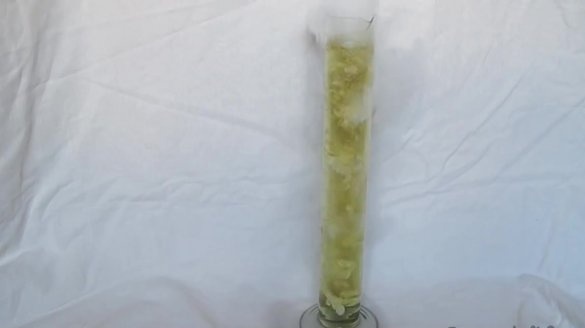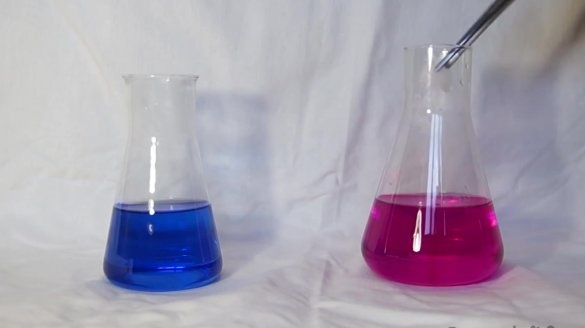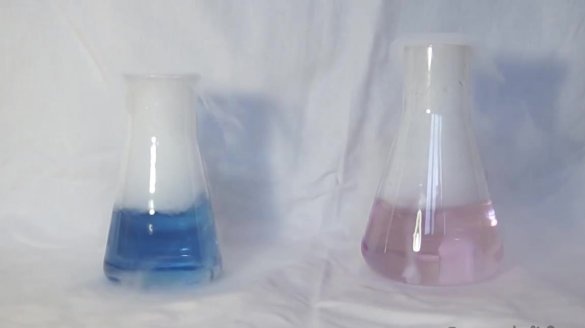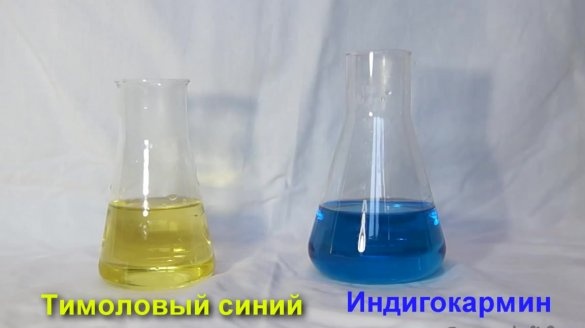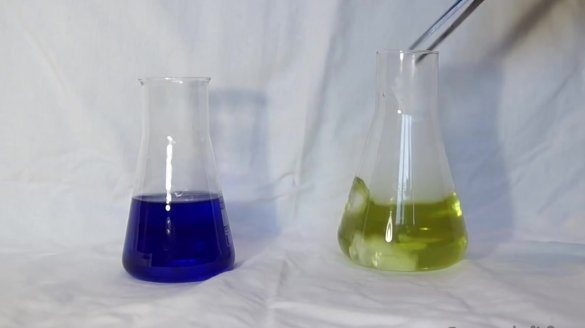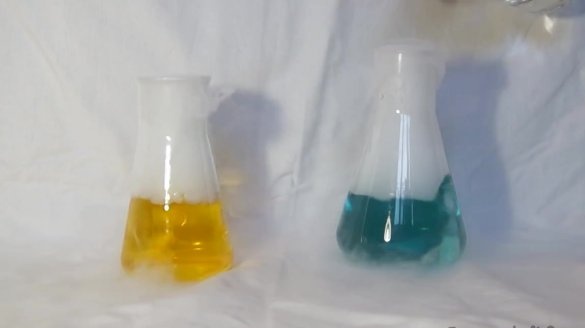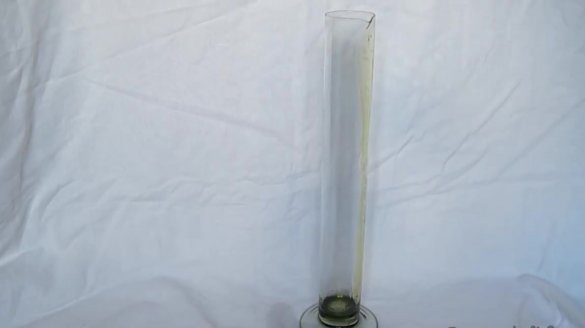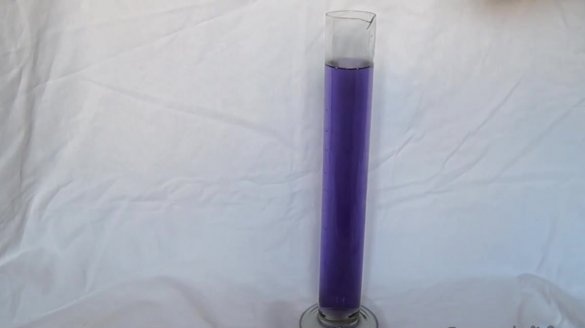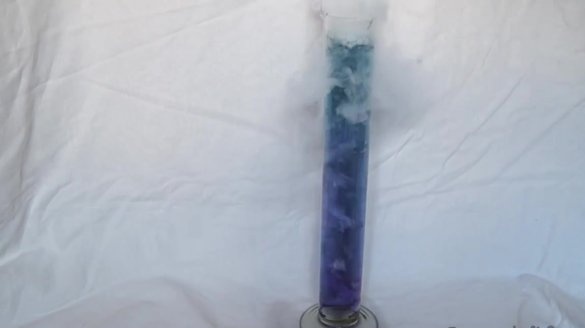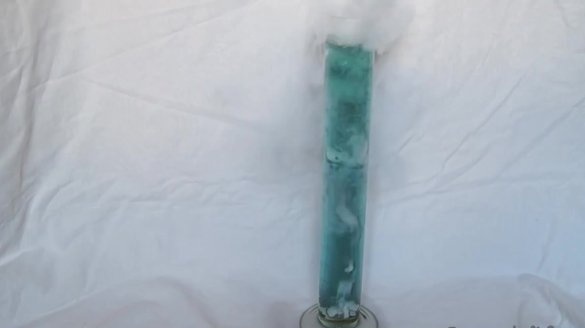In this material we will consider some interesting properties of dry ice, and also find out exactly how it interacts with water and some alkaline indicators.
First of all, let's get acquainted with the experiment process in the video
During the experiments we will need:
- dry ice;
- phenolphthalein;
- thymolphthalein;
- sodium hydroxide;
- thymol blue;
- indigo carmine;
- flasks;
- measuring cylinder;
- ammonia solution.
The first indicators, i.e. phenolphthalein and thymolphthalein are colorless in a neutral environment. However, it is worth alkalizing them with sodium hydroxide, as the indicators will change their colors.
Add dry ice to the solution. As a result, carbon dioxide begins to be produced, which reacts with the sodium hydroxide solution. This forms sodium carbonate or sodium bicarbonate, depending on the proportions. The acidity in the solution changes, as a result of which the indicators also change their colors.
The following indicators that will be used during the experiment are thymol blue and indigo carmine. The first indicator in a neutral solution is yellow, and the second is blue.
Alkalize the solution. Thymol blue turns blue, and indigo carmine turns green. Indigo carmine turns yellow in a highly alkaline environment.
Let's try to achieve this.
We throw dry ice into the flasks. After some time, thymol blue becomes yellow, and then orange, and indigo carmine becomes blue.
Finally, we present the last experiment, during which a universal indicator will be used, which is poured into a graduated cylinder, add warm water, then add an ammonia solution, after which the solution changes color to blue.
Add some more water.
And in the end, we throw small pieces of dry ice into the cylinder.
Dry ice reacts with ammonium hydroxide, which is in solution and gradually changes the color from violet to yellow.
These are the properties of dry ice and the features of its behavior when interacting with water and some indicators.

